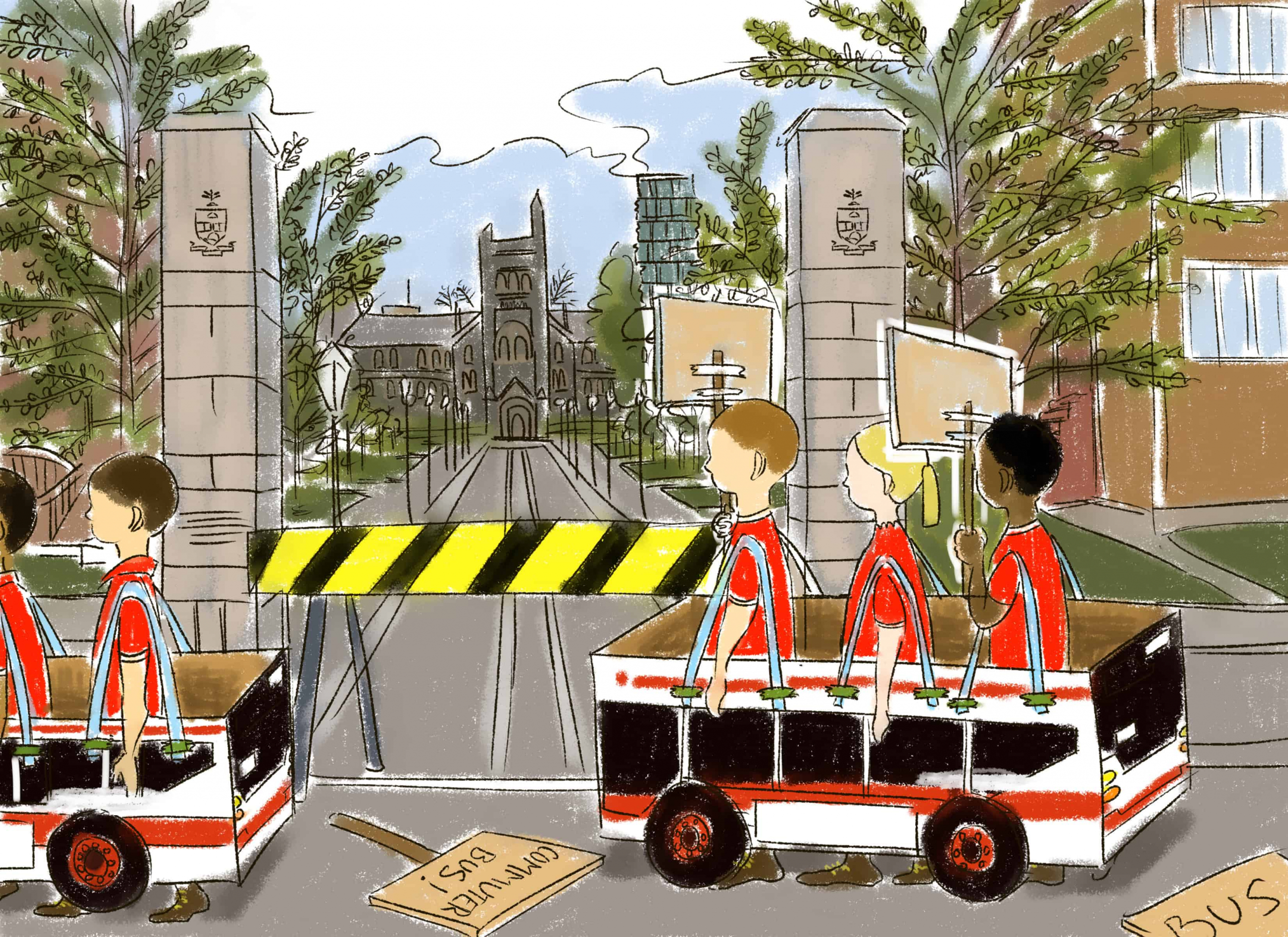Poor weather conditions, TTC maintenance and delays, and overcrowding during rush hour are only some of the struggles that commuter students deal with on any given day. We asked three contributors to reflect on what the university should focus on, in order to better serve its commuter students. Administration, we hope you’re taking notes.
SCHEDULING
Many commuter students often encounter an uphill battle when trying to become more involved on their respective campus. Scheduling does not seem to be designed with commuters in mind, and therefore getting a taste of campus life can at times seem hopeless.
Let’s start with frosh week, when thousands of anxious first year students embark on their first university experience. Semi-formals, trips to Ripley’s Aquarium, and fun activities like toga parties and bubble tea runs all occur at night — and due to the inconvenience it can cause them, few commuters are willing to stay on campus for anything once the sun sets.
As a result, frosh week can exclude and isolate those students who have to travel to get to campus. Though colleges and faculties are primarily responsible for organization, many orientations are linked through the university’s central student life body, which can do more to ensure that inclusive scheduling is prioritized by the organizing committees across campus.
The poor scheduling of social events hinders a massive volume of commuters from forming important social connections. In this vein, morning and early afternoon activities like lunch picnics in Queen’s Park or even car washes for those who drive should be prioritized.
Finally, and most importantly, many commuters can relate to the great annoyance of being forced to take a required class at night. It is a tremendous headache for students who commute for hours to travel after a class ends at 9:00 pm.
By the time they get home, they barely have time to themselves to do homework and recharge for the following day. This is not to mention the issue of safety when travelling alone at night. Scheduling classes that are mandatory for the completion of program requirements during nighttime hours fails to consider commuters and ignores their needs.
Joanna Kewal is a second-year student at Trinity College studying English and Sociology.
STORAGE
Hauling large backpacks, gym bags, and projects across campus is, quite literally, one of the heaviest challenges faced by commuter students at U of T. For those of us who can’t pop in and out of a dorm room throughout the day, finding a locker or another form of storage that fits our needs can be tough.
Almost all lockers at U of T come with a price tag, costing up to $100 a year. Given that commuter students often make the choice not to stay in a residence because of the steep costs associated with doing so, and the fact that GO Transit and TTC fares continue to rise, prices can dissuade students from getting lockers on campus.
Even in the rare case that students can rent out lockers for free, they are often limited and can be isolated from the rest of campus. Lockers at Victoria College, for example, are free to rent for a semester but are located almost 15 minutes away from St. George Street, where many students have regular classes.
An inexpensive locker system that is standardized across the U of T campuses would be ideal, in order to ensure that students aren’t being overcharged for lockers by a certain building or college. A locker system that is flexible and allows for varying storage locations throughout the week would also be beneficial, as it would allow students to store their items in different places, depending on where their classes are on any given day.
While this would require a significant overhaul to the current locker system at U of T, it is nevertheless worth consideration. The current efforts to accommodate commuter students in this regard are falling flat.
Saambavi Mano is a third-year student at Victoria College studying Peace, Conflict, and Justice Studies.
SCARBOROUGH SHUTTLE
Tired of taking the RT and the one-hour subway ride to UTSG from Scarborough? It must be a hassle for some students, especially while carrying 10 pounds of textbooks.
Many students from UTSC that have to commute downtown — for example, to work or take courses at UTSG — would benefit from the implementation of a shuttle bus service between the two campuses. This would help students avoid having to take multiple means of transport to reach their destination.
In fact, a shuttle bus between UTM and UTSG already exists; it is about time that this service is implemented for UTSC as well.
The city-managed project of connecting UTSC to the subway line was supposed to be completed years ago. Today, it is still in progress, and given that only the designing stage has been completed, the bus testing, maintenance, and release of the system seems out of the question for the time being. The alternative plan was the 198 bus, which runs from Kennedy Station to UTSC and will continue to do so until the construction is complete.
The Scarborough Campus Students’ Union (SCSU) has frequently spoken about bringing a shuttle bus service to UTSC, and articles published in The Varsity in 2014 expressed the hope that the project would become a reality. Yet, SCSU executive members have claimed that the shuttle bus idea was poorly supported, and unfortunately, the whole proposal failed.
However, while construction of the city’s alternative trudges on, the idea of a university shuttle bus must be brought back to the table soon. In this way, we will not only better accommodate commuters but also connect UTSG and UTSC in a more effective way.
Madiha Turshin is a fourth-year student at UTSC studying Management.


